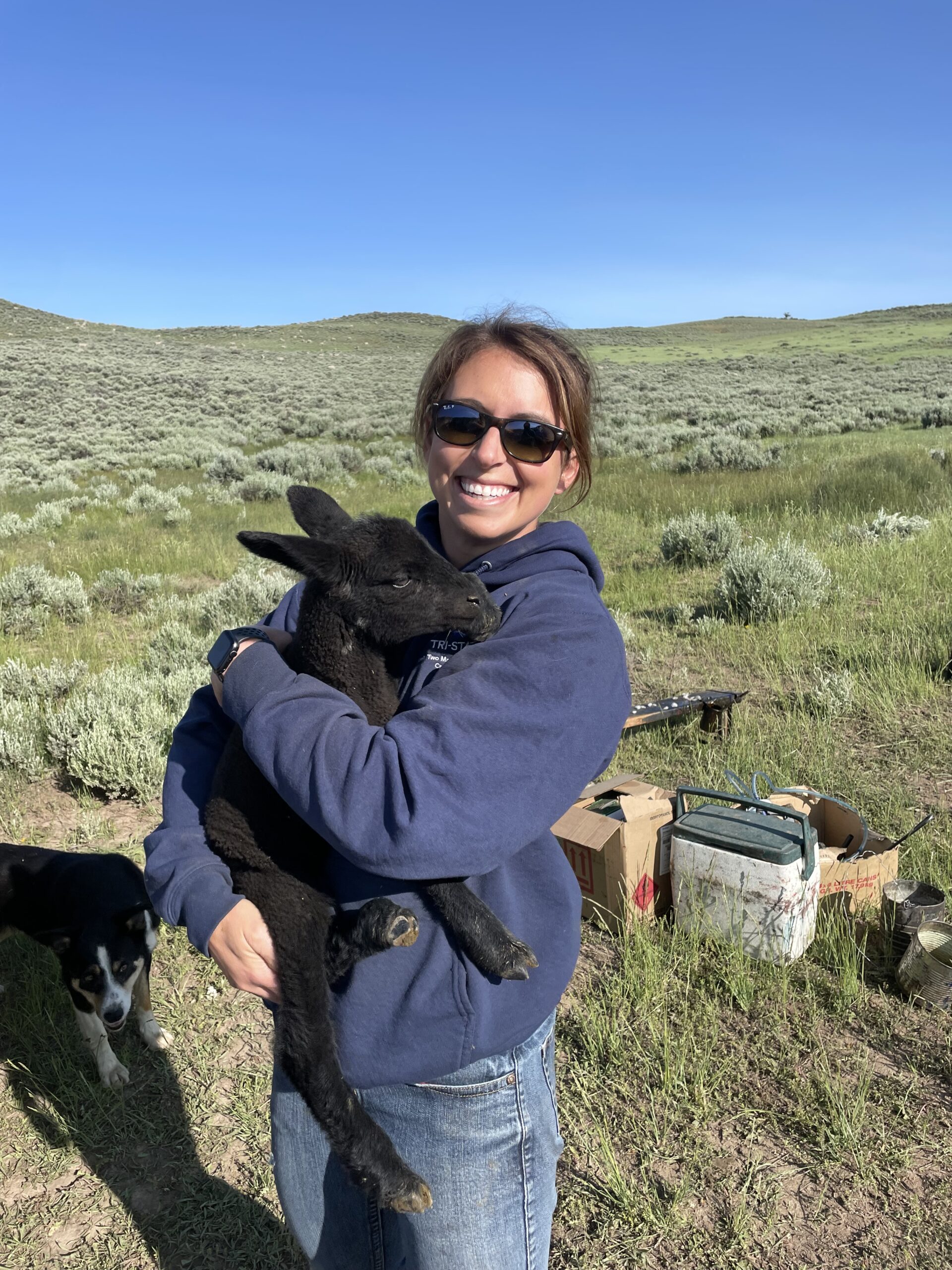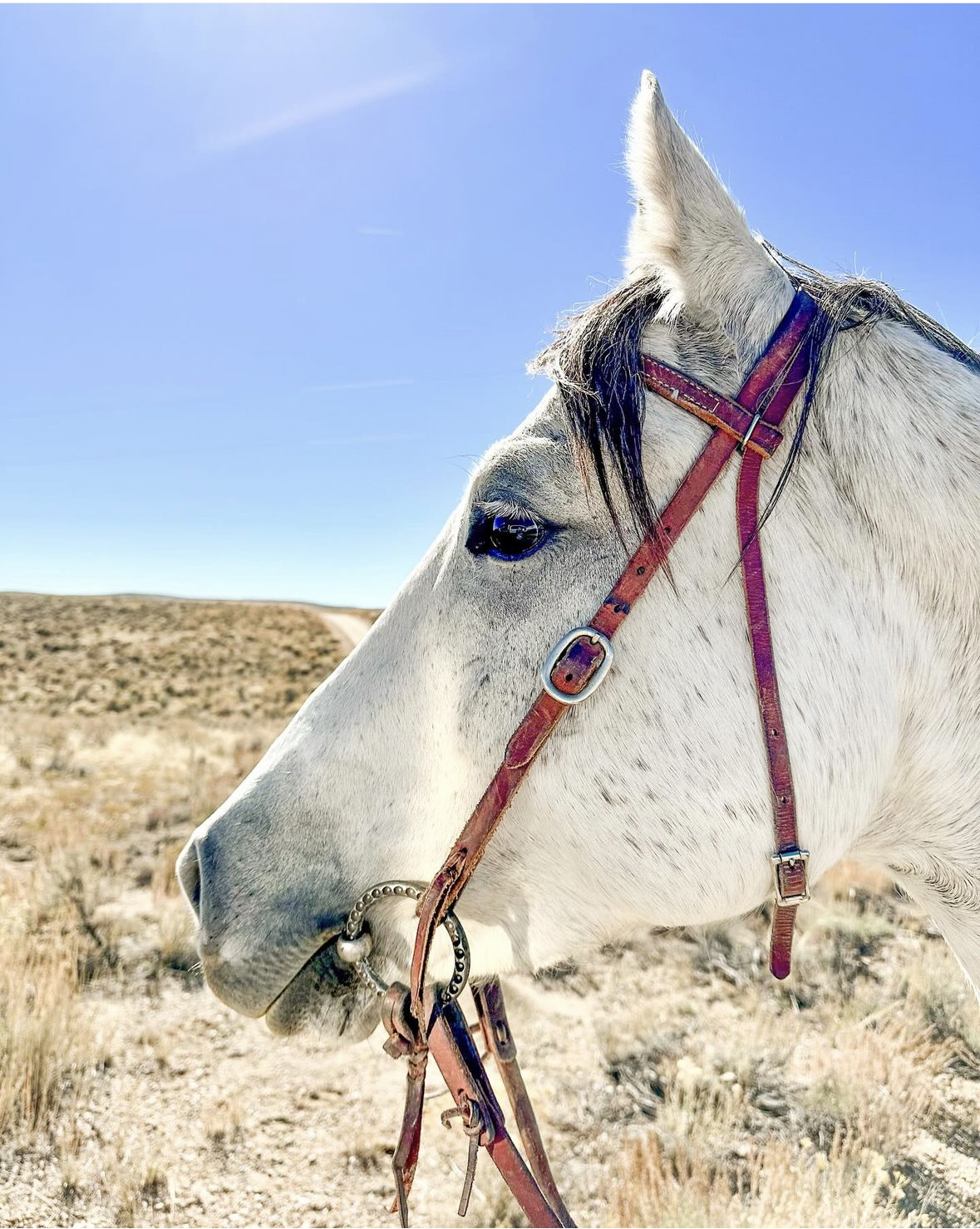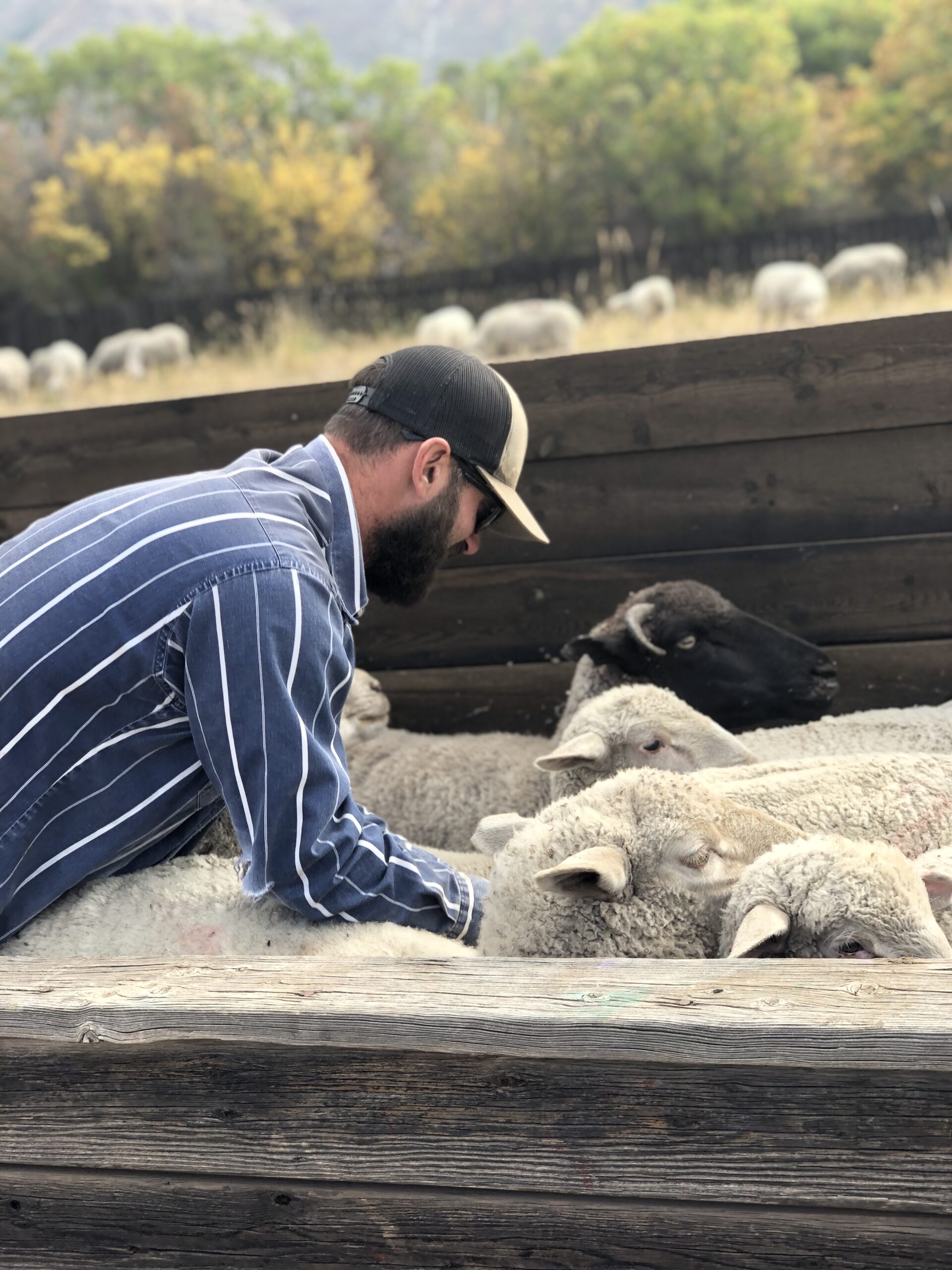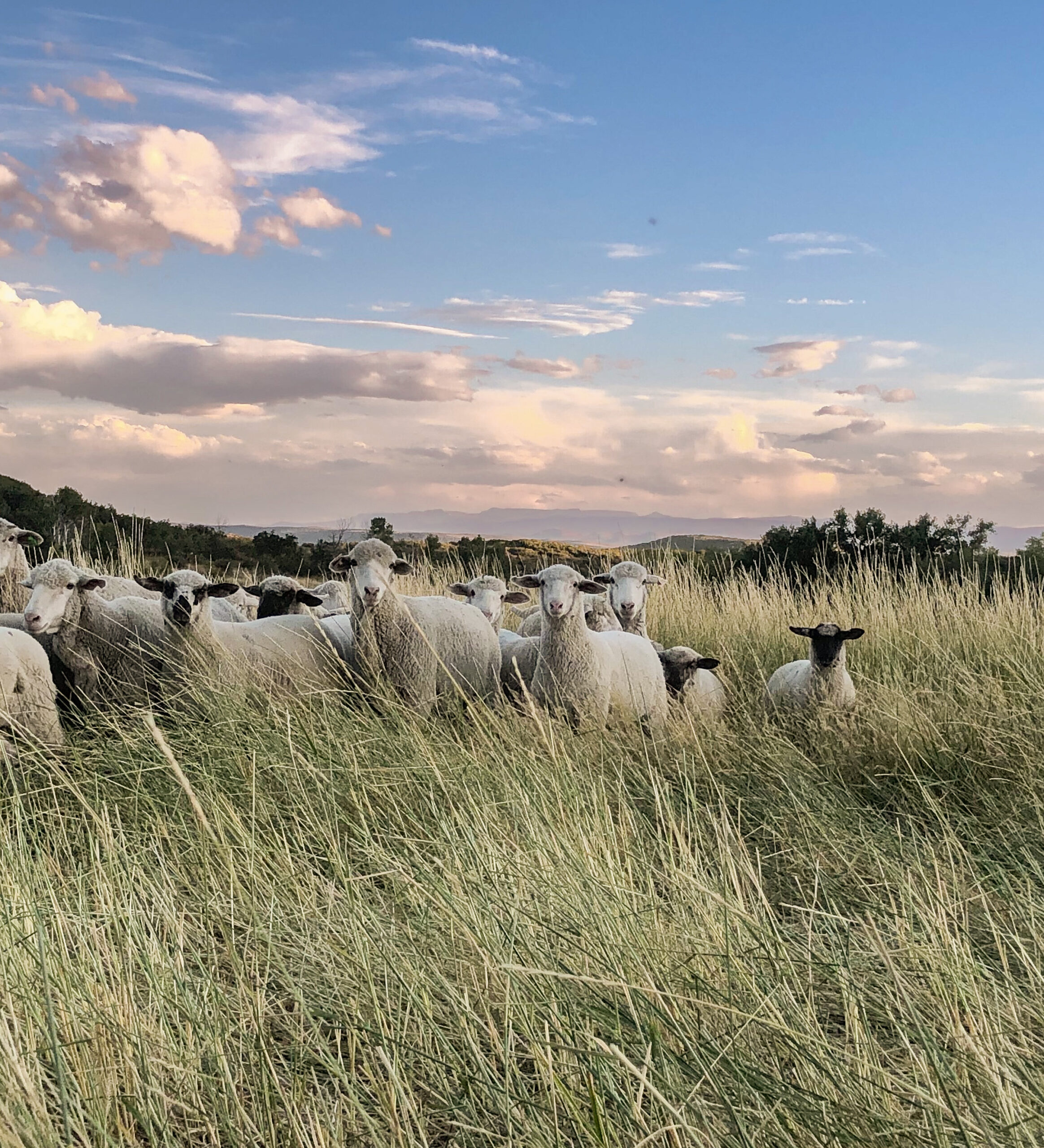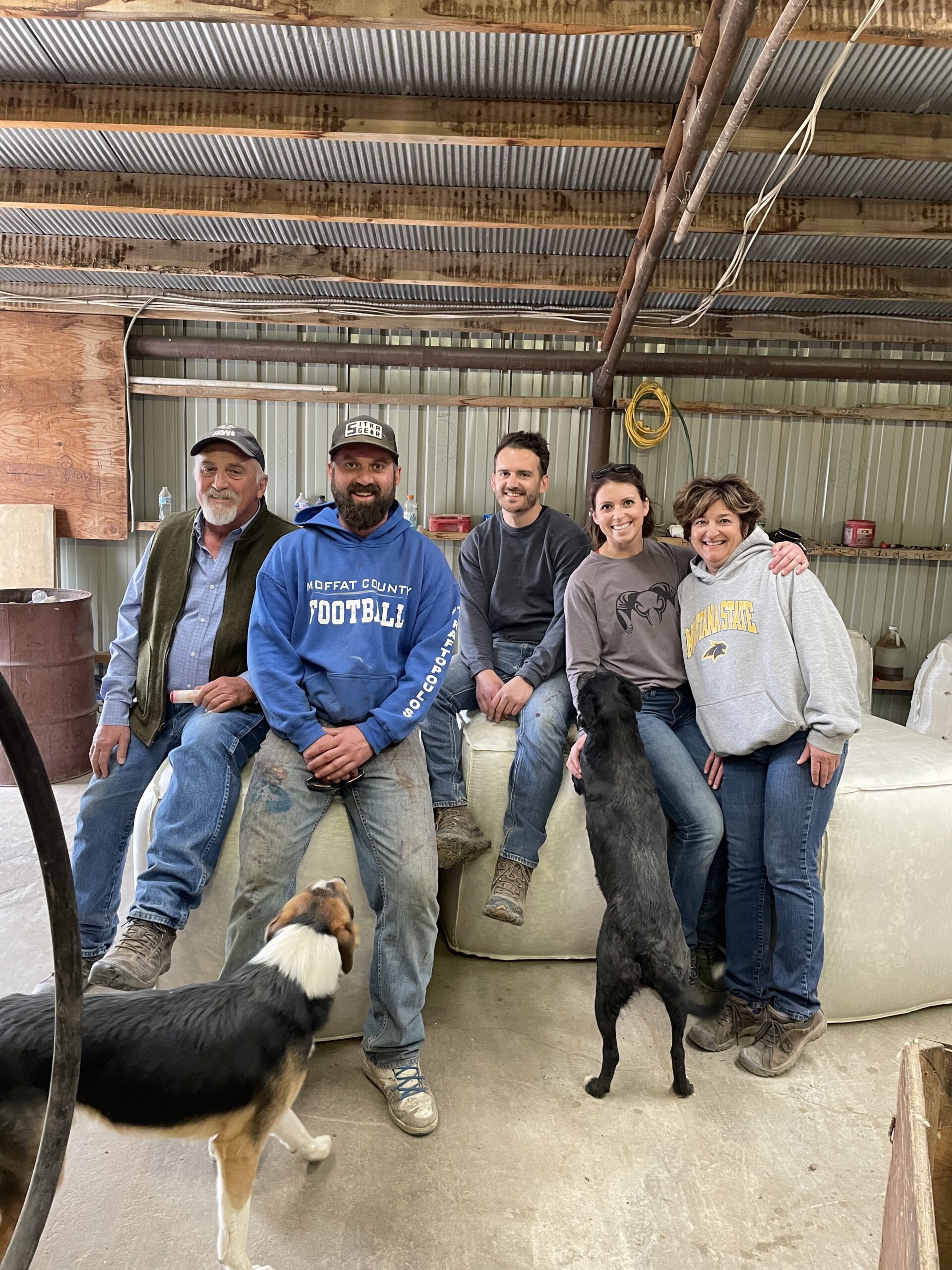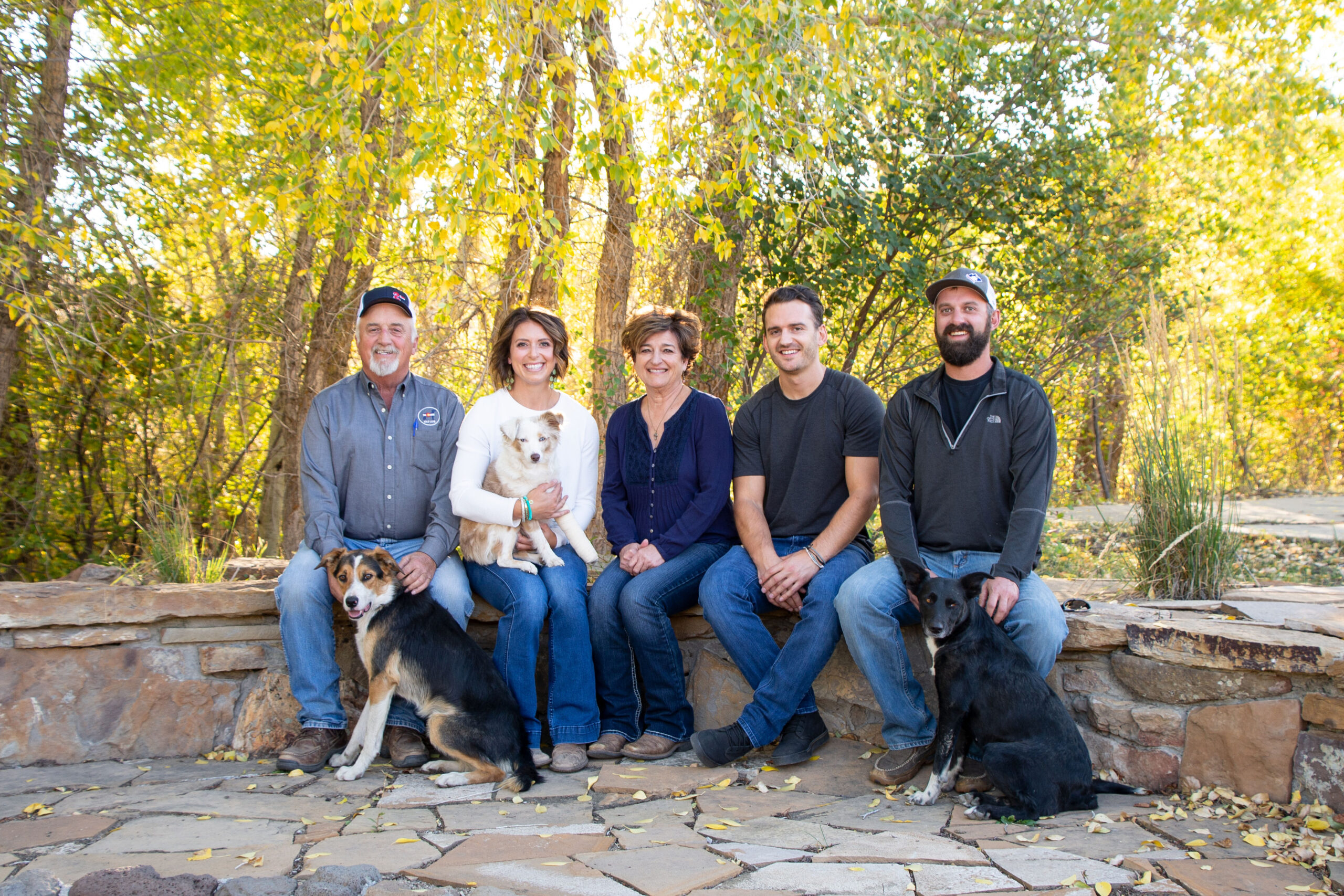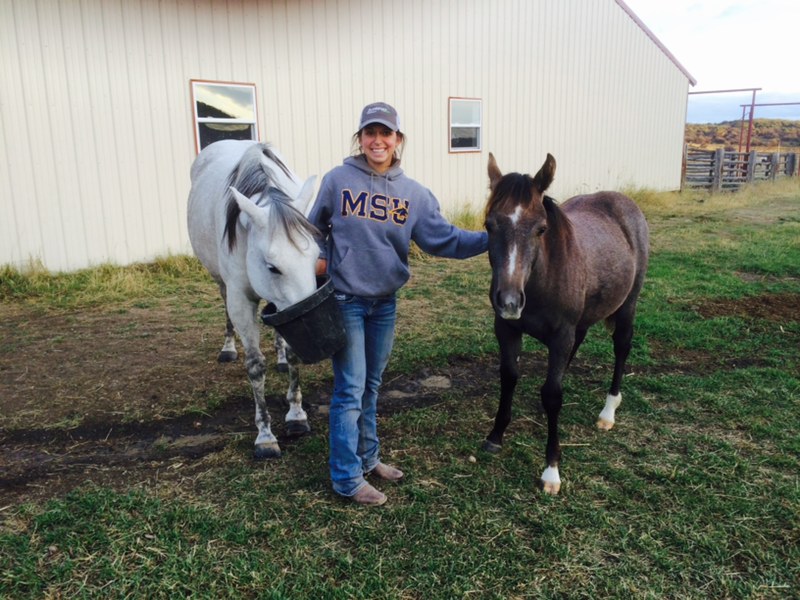Shepherding tradition and resilience: a family ranch in the high desert
The rugged nature and masculinity of ranchers in the American West has long been romanticized in movies and more recently in blockbuster TV series like “Yellowstone.” However, the reality of ranching often reveals a more nuanced picture, one where families work together to sustain their livelihood.
Jorgiea Raftopoulos epitomizes the evolving role of women in ranching. At the Two Bar Sheep Ranch in Craig, Colorado, Jorgiea is a key player in her family’s sheep operation. Her contributions blend traditional duties with modern practices, as evident in her energetic social media videos that showcase a real life window into a working ranch.
A Family Legacy
Jorgiea’s family has been in the sheep ranching business for 88 years, operating a migratory sheep system where their flock is constantly on the move. The operation is run by Jorgiea’s father Steve, and mother, Toni along with her two brothers and herself. “We’re a traditional Greek ranching family,” Jorgiea explains. “Both my parents were born into this life.”
Caring for 13,000 sheep, 20 employees, 120 horses, and a string of pack mules is a round-the-clock, everyday job. “My dad always says it’s not the kind of career where you ever get to shut your office door and turn the lights off,” Jorgiea says. “But I love being a part of this operation.”
The Pull of the Outside World
Ranch Duties
On the ranch, duties are somewhat departmentalized. Her father oversees the entire operation, her oldest brother oversees all the movement of sheep, horses, mules, and shepherds and works full-time on the ranch, and her second brother works directly with the processing plant and keeps an eye on the finances. Jorgiea and her mother handle the logistics of keeping all these pieces supplied, healthy, and happy.
When asked what she does day-to-day, Jorgiea suggests we start with cooking. “Since I was a kid, since my mom was a kid, it was the women who did all the cooking,” Jorgiea says. “Cooking together is part of our history. I come from a multi-generation Greek ranch family. It’s always been that way. Being Greek means being obsessed with food. We love making lamb roast and lemon rice. It’s new to our seasonal workers, who are typically Chilean, Peruvian, and Mexican, but they love it.”
Jorgiea sets the scene. “When we’re cooking for the crew during shearing or shipping season, imagine 20 very hungry, hardworking people at the end of a long day. At the bunkhouse, we put out a massive buffet of roast lamb, manestra, which is a traditional Greek dish of orzo, and we never skip out on dessert. I make a pretty good peach cobbler or lemon cake, and my mom has an amazing strawberry shortcake.”
Jorgiea’s Recipe: Simple Greek Lemon Rice
Prep
Cook
Total
Serves
Ingredients:
1 cup Ben’s Original converted white rice
2 cups chicken broth
1/4 stick butter
1/2 tsp salt
Juice of one lemon
Fresh ground pepper
Directions:
Combine chicken broth, butter, and salt and bring to a boil. Stir in rice and half of the lemon juice, turn down the heat and allow to simmer. When almost all the liquid is absorbed, stir in the remaining lemon juice, remove from heat, and cover. Let rest for 10 minutes. Sprinkle it with fresh ground pepper and enjoy!
Logistics and Modern Challenges
“Supply is a complex logistical challenge” says Jorgiea. Keeping things stocked and people supplied requires more than 100 lbs of potatoes a week, 50 lbs of onions, and large 50 lb to 25 lb sacks rather than small packaging of everything from rice, and dried beans to coffee, flour, and salt. “We don’t fill up a shopping cart,” Jorgiea jokes, “we fill up the truck.”
And that’s just the start. Once back at the homestead in Craig, the food needs to be divided and stored properly in a series of commissaries. Jorgiea, with her small frame, handles heavy lifting, unloading full pallets of 50 pound bags of dog food for the livestock guardian dogs, 100 pound bags of oats for horses, or 50 pound blocks of salt for the sheep. Supplies are then loaded into panniers and onto pack mules. Their ranch sits at over 6,000 feet in the thin air of the high desert. The camps for the shepherds and sheep require a difficult full morning ride on horseback, leading the mule train more than seven miles up another 1,800 feet. “Nothing is easy. No truck or ATV would ever make it 10 yards up the rocky, single-trail terrain,” Jorgiea explains.
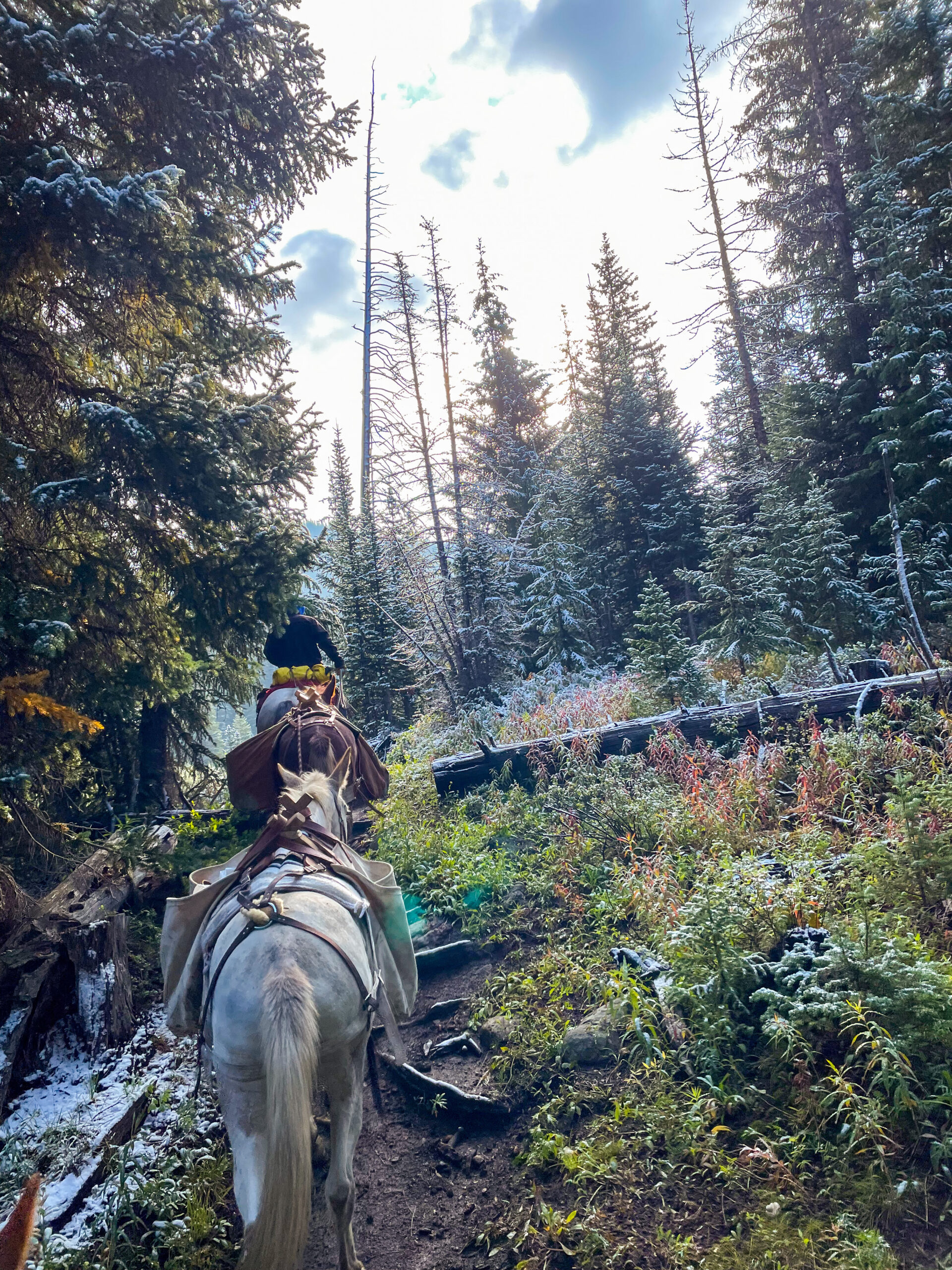
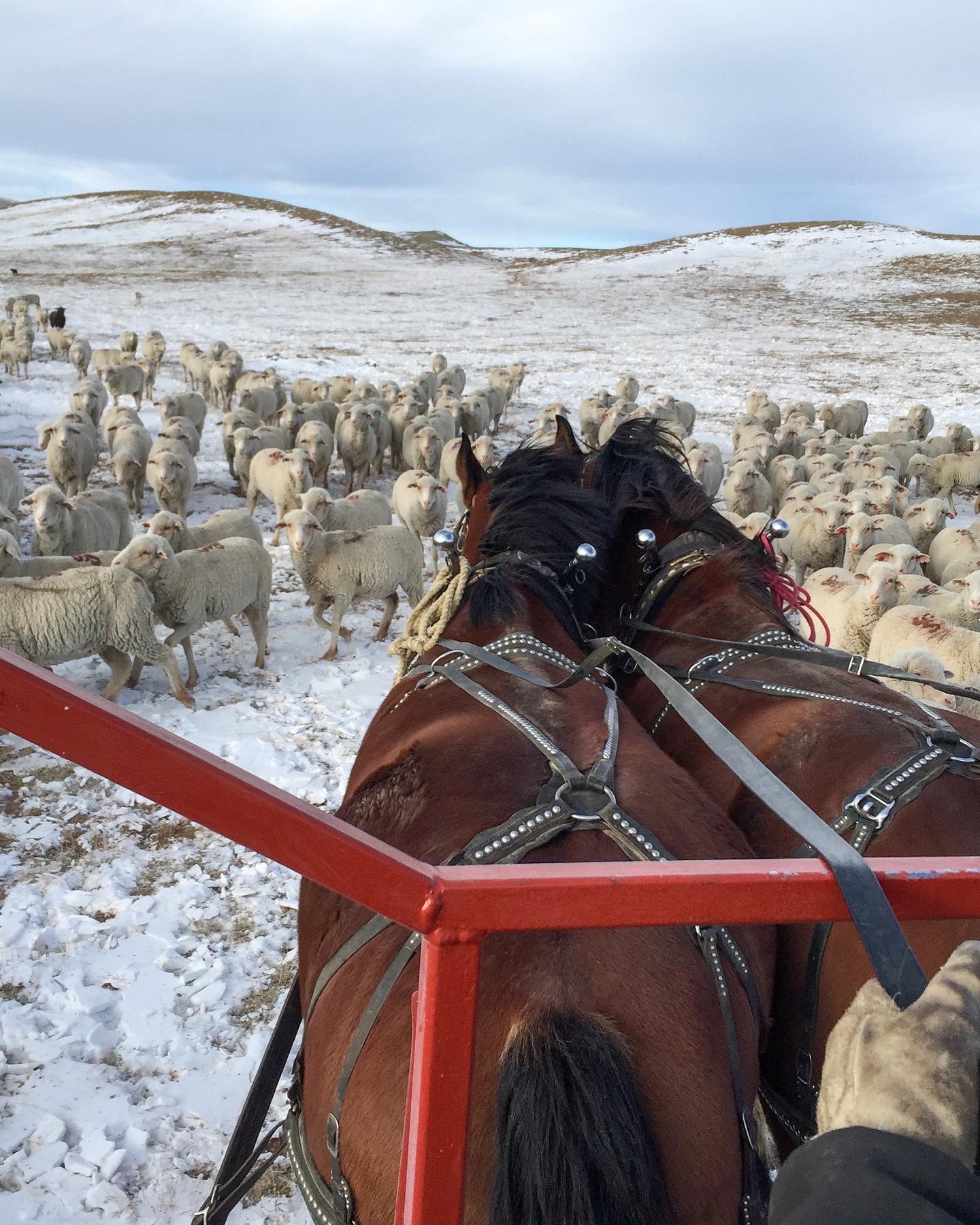
The Impact of Modern Technology
When her dad or brother delivers provisions to the camps, they instinctively check on the condition of the flock, which can have as many as 1,000 ewes + their lambs, and the well-being of the shepherds and livestock guardian dogs. “Margins are not big in the ranching business,” she explains. “We need to care for these animals carefully and protect them from bears, coyotes, mountain lions, and now, wolves.”
Administrative Duties
“When most people think about ranching, they think about horses and tractors and blue sky, but there’s a lot more to it than that. I have to know enough about animal health, veterinary health, and vaccine protocols. I have to understand the natural resources and recognize the poisonous weeds we have to mitigate safely. And of course, I have to have the communication and leadership skills to set and maintain standards with our employees to make sure they are knowledgeable, productive, and safe in their jobs.”
Keeping up with legislation is a big part of the job, she explains. She spends hours in the office as a liaison to many government agencies on issues that affect the health of the animals and the health of the natural environment her herds rely on. She stays in regular contact with officials from Colorado Fish and Game, Colorado Parks and Wildlife, the Bureau of Land Management, and the U.S. Forest Service.
She also collaborates with professional, industry, and conservation organizations, including the Colorado Wool Growers Association, the American Sheep Industry Association, and the Natural Resources Conservation Service (NRCS).
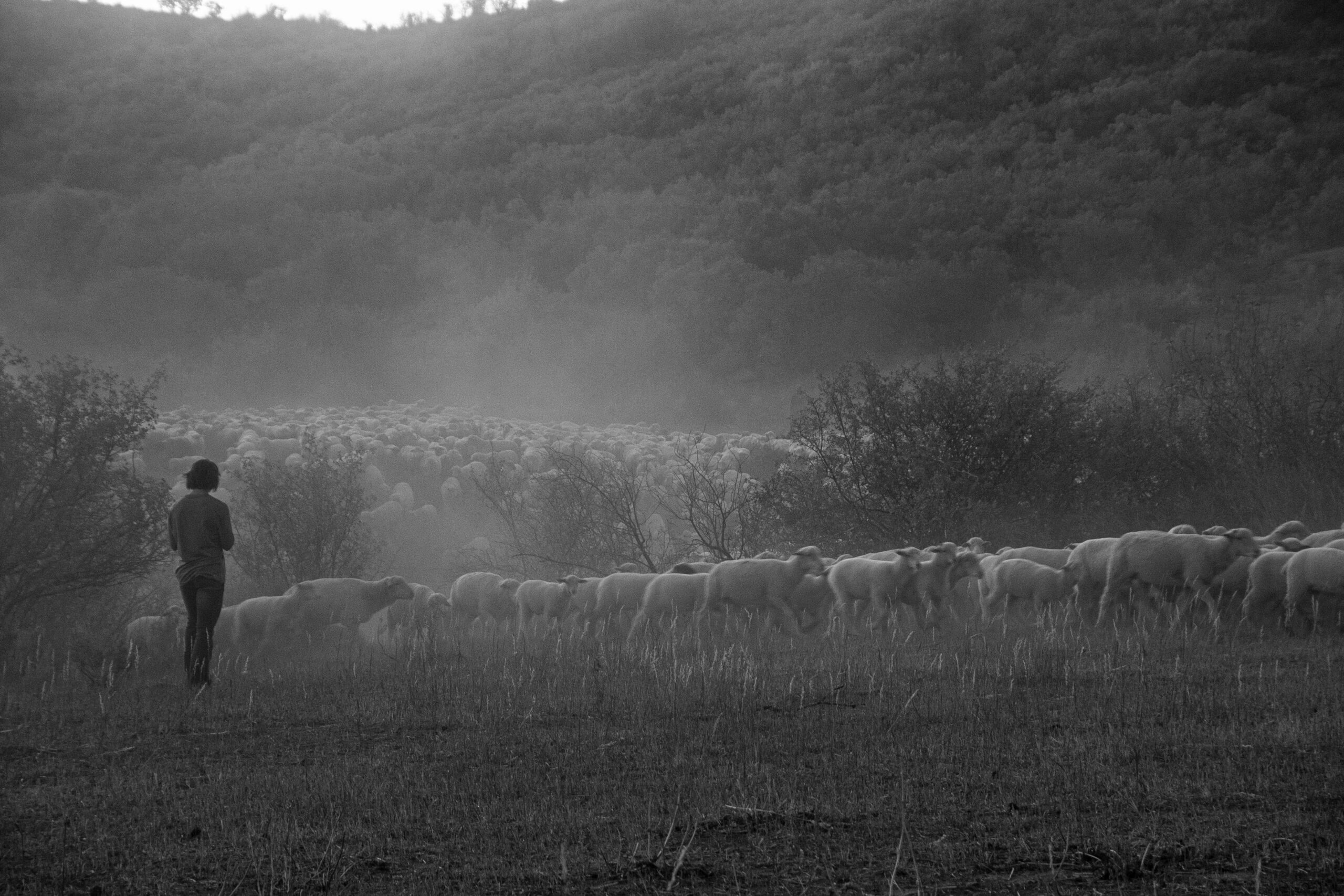
The Reintroduction of Wolves
“Ranchers don’t want to kill predators,” Jorgiea insists. “We put a lot of work and expense into working with the habitat and not against it. The role of the rancher and shepherd is not just to protect the sheep. It’s to protect all of the resources and habitat that the animals rely on. So even if we could kill wolves, we don’t want to.”
We’re starting by investing in flashing lights to deter wolves and even flashing collars for the guardian dogs. There are also sound boxes that we hope will keep them away. But the truth is we don’t know. Wolves are on the ground now. This is the first season. They’re smart. We’re going to have to see what we’re up against. There will be long nights, big costs, and a lot of worry.”
Bridging the Urban-Rural Divide
One of Jorgiea’s goals in sharing stories of life on the ranch through social media is to help people see what ranch life is really like. Her efforts are paying off, with almost 27,000 Instagram followers keeping pace with her life on the ranch. “Ranching is changing, as is the role of women like me in large family-run operations,” she says.
When asked about the biggest change in ranching since she was a kid, Jorgiea points to the urban-rural divide. “People are now three generations removed from agriculture. They don’t come out here. They don’t know any farmers or ranchers. They don’t know where the products they purchase come from. We understand that city living doesn’t offer the same exposure to farm life. That’s why we’re eager to invite urban residents to experience our world, learn about our practices, and become a part of our farming community.”
In the high desert of Colorado, where the landscape is as challenging as it is beautiful, Jorgiea Raftopoulos is changing the stereotype of the modern American rancher. Her unique style bridges tradition and technology, preserving her family’s legacy while adapting to contemporary challenges. Through her work and her social media presence, she offers a genuine glimpse into the world of ranching, and gives us all a better understanding of agriculture and the people who sustain one of America’s oldest and most vital industries.

